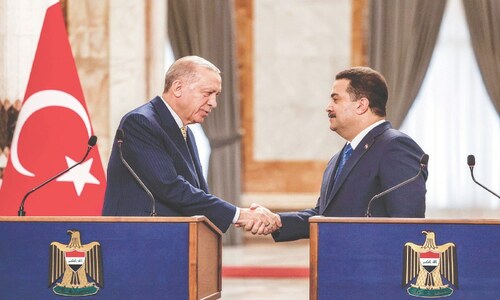COLOMBO: After a month of open warfare between Sri Lanka’s government and Tamil Tiger rebels, analysts say the next step may involve more bomb attacks in the capital as well as a widening of the battlefront in the island’s tsunami-hit east.
August saw the first ground fighting since a 2002 ceasefire, but it has so far been focused on the northern Jaffna peninsula and the area just south of the northeastern port of Trincomalee.
Analysts say over a thousand people could have been killed there last month and few expect a quick return to talks.
“This will drag on until one side manages to compel the other to the negotiating table, but there will be massive collateral damage on both sides,” said Jane’s Defence Weekly analyst Iqbal Athas. “Two decades of war will tell you that.”
The fighting in north and east in August was as bad as during previous rounds of the war, he said, although this time both sides had acquired more heavy artillery during the truce to fire at each other.
The government said on Monday the army had pushed the rebels out of the Sampur area overlooking the strategic Trincomalee harbour, from which the Liberation Tigers of Tamil Eelam (LTTE) have attacked navy ships and shelled military bases.
Some officials say that might be enough to stop the current offensive. Others think the government might now turn south and try to cleanse eastern areas of the rebels.
Experts are divided on whether either side is strong enough to start a third, conventional front.
The Sampur area had been heavily shelled for more than a month, and troops moved forward through the landmines, woodland and paddy fields with little resistance. But analysts say army success in Sampur could lead to Tiger attacks elsewhere.
That, most analysts believe, would include new bomb attacks in the capital Colombo, scaring off investors and tourists. Two blasts in August prompted the South African cricket team to cancel a tour and flee the country.
So far the military seems confident it is winning — and some diplomats believe that if the army takes Sampur they will turn south and attempt to take all eastern Tiger territory.
Key to that battle is what many see as the government’s new, less-than-secret weapon — a breakaway group of ex-Tiger fighters led by former rebel eastern commander Karuna Amman, who split in 2002 and has launched hit and run attacks on the LTTE.
Karuna and the government deny any mutual links, but aid workers in the eastern Batticaloa district — where his fighters are based — say the link is obvious. They say his men may move with army support to try and kick the Tigers out of the east.
The strength of his fighters is hard to gauge, but like the mainstream rebels he is accused by UN children’s body, Unicef, of abducting local young men and children for training to fight. Hundreds have gone missing in recent months, and many expect they will be used to fight in any new offensive.
Diplomats say both sides are inflating enemy losses and talking down their own, but most say weeks of army artillery fire and air strikes have probably killed more Tiger fighters than government troops.
The rainy season in the coming months will bog down heavy vehicles. Defence experts say that will favour the lighter Tigers and that is when many expect them to make their next big move.
For almost three weeks the Tigers have been fighting along the front line on the northern Jaffna peninsula, cut off from the rest of the island by rebel territory and now effectively besieged.
Jaffna, the army-held birthplace of rebel leader Velupillai Prabhakaran, is seen as a likely key LTTE objective.
Tiger artillery fire briefly stopped all fixed wing flights into Jaffna’s only airbase, but aircraft are now flying again.
Sea reinforcements appear curtailed by fears of Sea Tiger attacks and most expect government supply lines to be hit again.
“I think Jaffna is going to quieten down for now,” said one western military expert on condition of anonymity. “They will wait until the seas get rough, when it gets difficult for the army to move by sea and the roads get worse.”—Reuters













































Dear visitor, the comments section is undergoing an overhaul and will return soon.